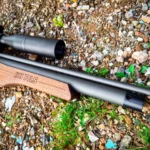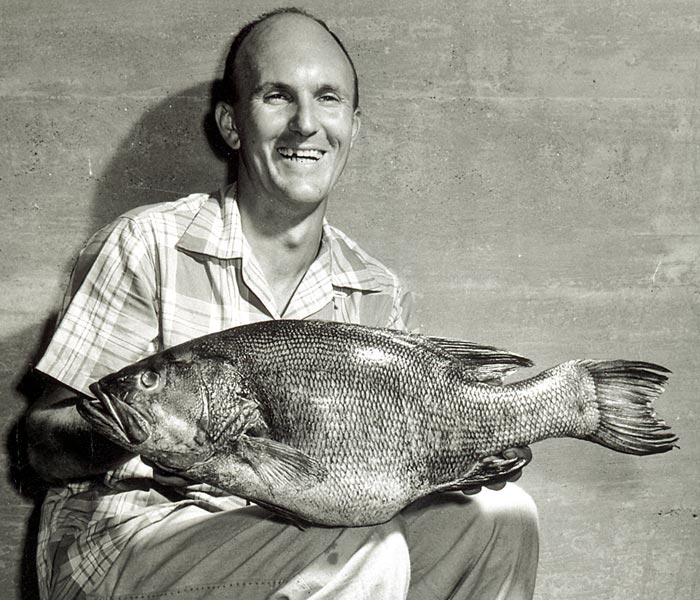
Although oftentimes overshadowed by their larger-mouthed relatives, the smallmouth bass is easily one of the most popular freshwater game fish in North America. Their expansive range, accessibility, and willingness to take a variety of baits, lures, and flies make them a great target for sportsmen of all levels.
And while they don’t grow as big as largemouths, pound-for-pound, smallmouth bass are every bit as strong and aggressive.
Couple these facts with their beautifully mottled complexion, and it’s no wonder why anglers have pursued smallmouth bass for centuries.
So without further ado, here’s 10 of the biggest smallmouth bass ever recorded:
All-Tackle: David Hayes – 11 pounds, 15 ounces
Dale Hollow Reservoir, Tennessee
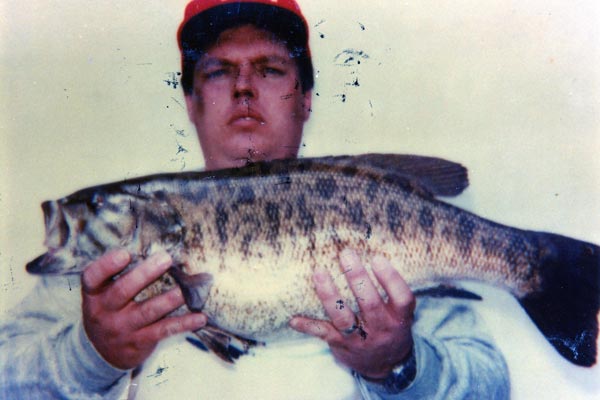
David Hayes’ celebrated 5.41 kg (11 pounds, 15 ounces) All-Tackle world record smallmouth bass has seen its share of controversy over the years.
Hayes caught his record fish on July 9, 1955 while trolling a lure in Dale Hollow Reservoir, Tennessee, without a doubt the most famed body of water for producing massive smallmouth bass.
In fact, the three heaviest smallmouth ever recorded have come from Dale Hallow!
Hayes’ catch held the All-Tackle title for 41 years, despite swirling rumors throughout the angling community denouncing his catch. These rumors, coupled with an affidavit stating that the dock owner added lead weight to the catch (unbeknownst to Hayes), resulted in the temporary ousting of Hayes’ record.
During this time, John Gorman’s held the All-Tackle title with his 10 pound, 14 ounce smallmouth he caught on April 24, 1969 while fishing the same location (Dale Hollow Reservoir, Tennessee).
However, nine years later, it was proven through multiple polygraph tests that the sworn affidavit that denounced the legitimacy of Hayes’ smallmouth, had been falsified.
Thus, returning the All-Tackle title to Hayes and retiring Gorman’s trophy, which still holds the title of the second heaviest smallmouth ever submitted to the IGFA, even though it is not a current record. Despite the controversy surrounding Hayes’ smallmouth, it has withstood the test of time – and quite a few polygraphs, too.
8-Pound Line: Paul E. Beal – 10 pounds, 8 ounces
Dale Hollow Reservoir, Tennessee
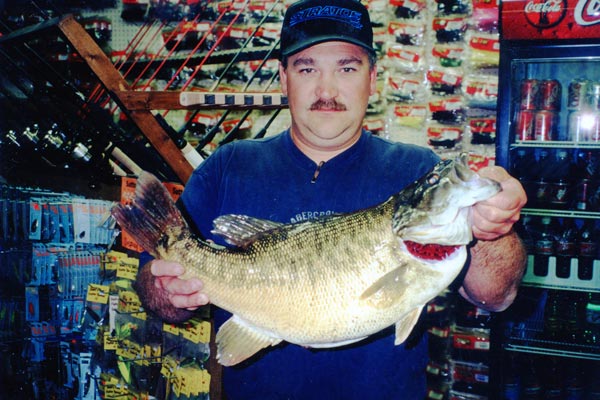
More than 30 years after Hayes’ historical catch, Dale Hollow produced once again on April 14, 1986 in the form of a 10 pound, 8 ounce smallmouth caught by local angler Paul E. Beal. The story goes that Beal was sharing a houseboat with some friends and family, and on that fateful morning he was left behind to do the dishes while his buddies snuck off to go fishing.
Angry that he was left cleaning up after everyone, Beal decided to “cool-down” by going fishing with his dad. Not long after the plastic grub he was casting hit the water, Beal came tight on the trophy smallmouth.
After a 15 minute fight on an 8-pound test and no leader, Beal boated the fish which bottomed-out his 10-pound scale. Knowing he had something special, Beal immediately headed for the docks for an official weighing.
The catch was documented well and soon after made headlines as the third heaviest smallmouth ever, and the new men’s 8-pound line class world record. But that doesn’t mean the catch wasn’t controversial. Dale Hollow is bisected by the Tennessee/Kentucky border.
According to Beal, the fish was caught in Tennessee, but weighed in Kentucky. This has created a feud between the two states, who both want to claim ownership for this monumental catch, and understandably so.
12-Pound Line: Terry Dodson – 9 pounds, 6 ounces
Lake Jocassee, South Carolina
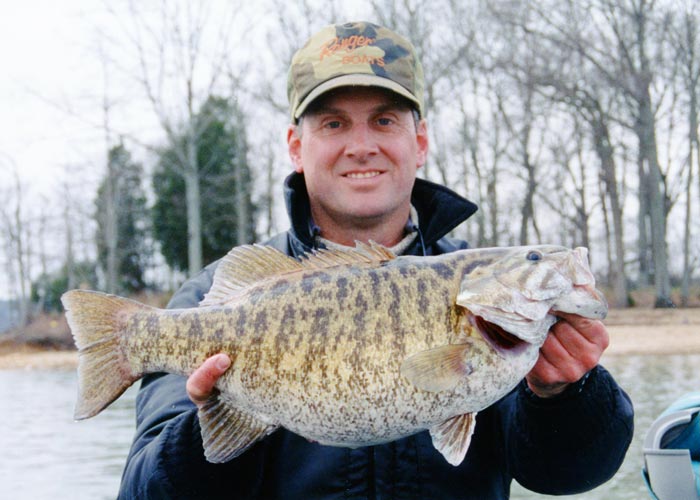
In 2001, angler Terry Dodson made angling headlines for the world record smallmouth he pulled from Lake Jocassee, which is located in far northwest section of South Carolina and very close to the North Carolina border. On the morning of May 3, 2001, Dodson was fishing with a friend on his boat, when the diving plug he was casting suddenly got crushed.
After a relatively quick 5 minute fight, Dodson’s friend was able to net the fish. The fish was officially weighed-in at 9 pounds, 6 ounces and has held the men’s 12-pound line class record ever since.
6-Pound Line: Dr. E. Scott Yarbo – 8 pounds, 9 ounces
Counce, Tennessee
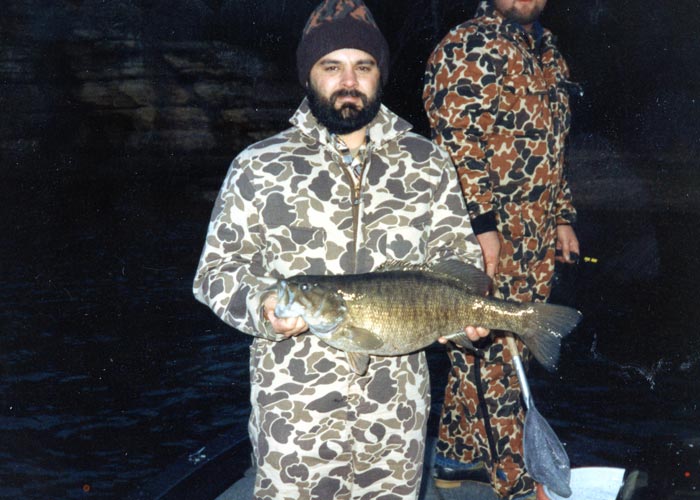
Dr. E. Scott Yarbro braved the snow flurries and strong winds on the morning of March 11, 1998, and ventured out to Pickwick Lake, located in Counce, Tennessee. Later that morning, while casting a 4-inch Harville Shad on a 3/8-ounce jig head, Yarbro hooked into a fish that put his 6-pound tackle to the test.
Nearly 10 minutes after coming tight, Yarbro had the “biggest smallmouth he’d ever seen” on his boat. Realizing they had something special, Yarbro and his friend immediately called it a day and headed straight to a local store for an official weigh-in, where it tipped the scales at an impressive 8 pounds, 9 ounces.
Soon after, Yarbro’s fish was granted the men’s 6-pound line class record, which it still holds today.
16-Pound Line: Terrell D. Nail – 8 Pounds, 6 ounces
Pickwick Lake, Alabama
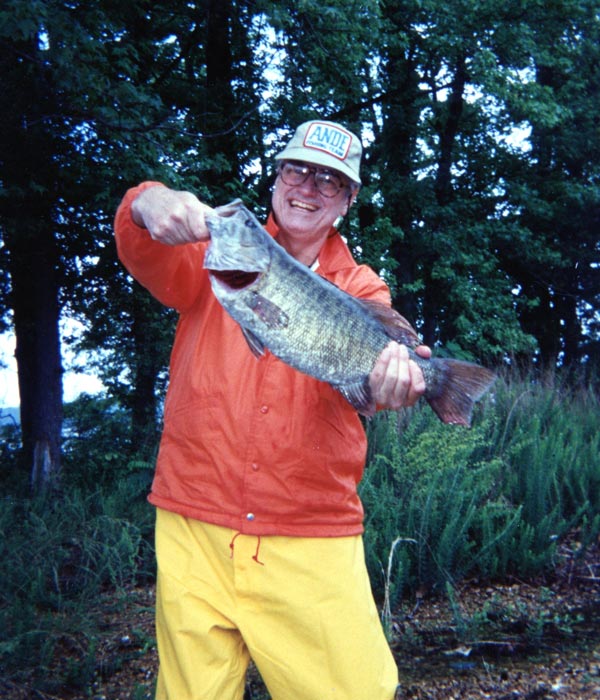
The men’s 16-pound line class record has belonged to Terrell D. Nail since he pulled an 8 pound, 6 ounce smallmouth from Alabama’s Pickwick Lake on January 4, 1988. But unlike the other anglers in this list, Nail was fishing with a live shad – rather than a jig – when he hooked his world record. The fish put up a tough fight for 8-10 minutes before it could be subdued and landed.
An interesting fact about Nail’s record fish is that it was originally submitted for a 12-pound line class record because that was what he was using at the time. Had the line tested accurately, his catch would have never been listed as world record because the 12-pound line class record was a couple ounces heavier at the time.
However, because the 12-pound Berkley Trilene XT line he was using tested out at 16.8 pounds, his catch was placed in the 16-pound category and became the new world record.
Ultra-Light Tackle: Herbert Ratner – 7 pounds, 0 ounces
Pickwick Lake, Tennessee
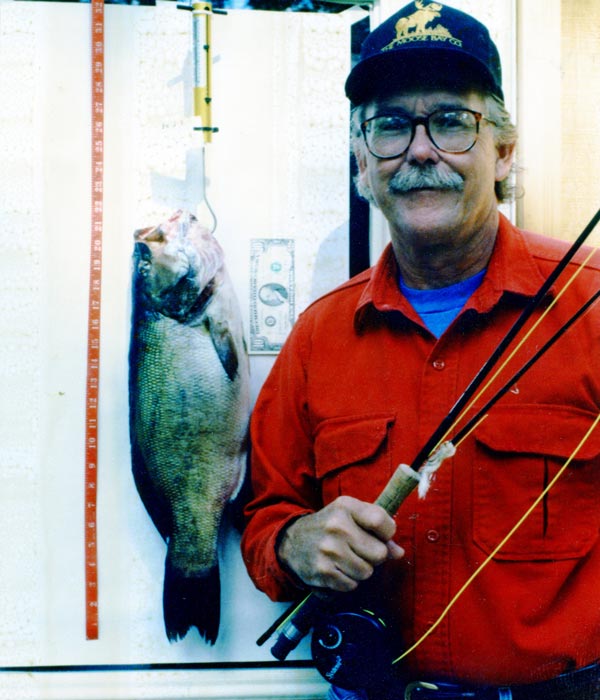
When it comes to catching trophy smallmouth on ultra-light tackle, that title belongs to multiple record holder Herbert Ratner.
On the morning of June 2, 1997 while fishing a live minnow on the Tennessee side of Pickwick Lake, Ratner skillfully played a 7-pound smallmouth on straight 2-pound tackle (no leader) for nearly 20 minutes, before he could subdue the fish.
As if that wasn’t impressive enough, Ratner was also able to properly document the fish on the shoreline and then release it alive. And not only does Ratner own this impressive record, he also holds the 2-pound fly tippet record for smallmouth bass with a 5 pound, 8 ounce fish he caught in 2000.
20-Pound Fly Tippet: John Herrick – 6 pounds, 12 ounces
Basswood Lake, Minnesota

While John Herrick’s 6 pound, 12 ounce smallmouth bass is certainly not the largest specimen ever caught by an angler, it is the largest smallmouth bass record ever caught on fly tackle that has been submitted to the IGFA.
Herrick was fishing Minnesota’s Basswood Lake on August 30, 1997 when he caught his record smallmouth.
The fish ate a white rabbit strip fly and tested Herrick’s tackle and whits for nearly 20 minutes before he could finally boat the fish.The catch soon became the men’s 20-pound tippet class record after it was officially weighed and submitted to the IGFA.
16-Pound Fly Tippet: Pamela Kinsey McClelland – 6 pounds, 4 ounces
Pine Lake, Michigan
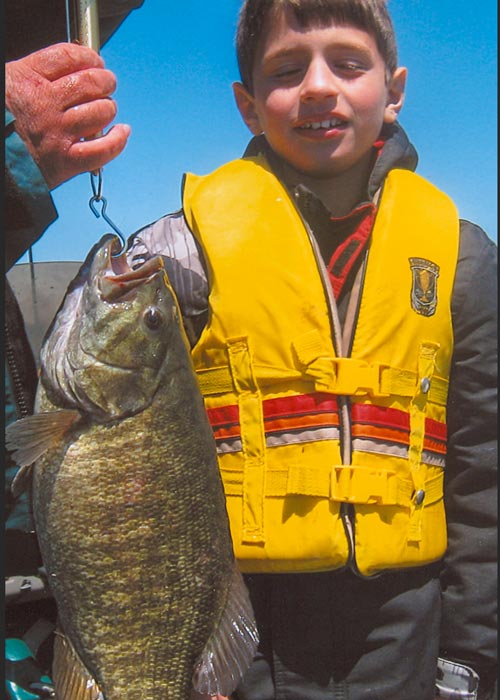
Before the IGFA decided to split the freshwater line class and fly tippet world records into men’s and women’s categories (to make the program consistent with the saltwater counterpart), angler Pamela Kinsey McClelland was the only woman to hold a smallmouth bass record.
McClelland caught a 6 pound, 4 ounce smallmouth on August 12, 1995 while fly fishing on Pine Lake, Michigan with her friend, her husband, and her dog.
McClelland, who was visiting Michigan from her home in Washington D.C., needed 10 minutes to land the trophy smallmouth after it ate the red and white streamer fly she was casting. The catch has held the distinction of the heaviest smallmouth caught on 16-pound fly tippet for nearly 20 years.
Male-Smallfry: Michael Fillette – 5 pounds, 12 ounces
Lake Erie, New York
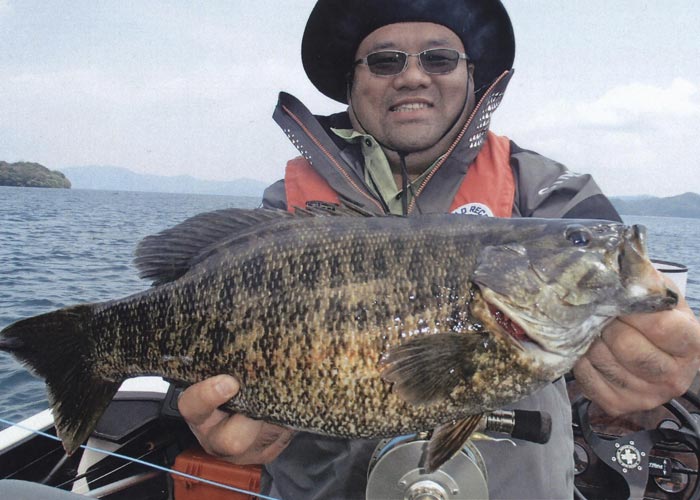
One of the reasons why smallmouth bass are such a popular game fish is because anyone can catch them. Unlike a musky or a marlin that can overpower young or inexperienced anglers, smallmouth are sized appropriately to accommodate all anglers, while still requiring finesse and skill.
Angler Michael Fillette was only eight years old when he caught a fish that most smallmouth junkies would die for – a 5 pound, 12 ounce fish that he pulled from Lake Erie in New York on May 18, 2009.
The young Fillette needed only 8 minutes to subdue the fish after it inhaled the live shiner he was fishing. Not only does Fillette hold the Male-Smallfry record, he is also the youngest angler to hold a record on smallmouth bass.
8-Pound Fly Tippet: Ichiro Nagai – 5 pounds, 9 ounces
Lake Inawashiro, Japan
Although smallmouth bass gained their popularity in North America, their reach is not limited to the US and Canada alone. After being introduced in locations around the world, several international locations are producing world-class sized smallmouth.
On June 8, 2013, Japanese angler Ichiro Nagai, M.D. became the first angler to catch a world record smallmouth bass outside of North America.
Nagai caught his 5 pound, 9 ounce smally while fly fishing Japan’s Lake Inawashiro. Nagai needed only a few minutes to subdue the catch, which soon after became the heaviest smallmouth ever caught on 8-pound fly tippet.








































